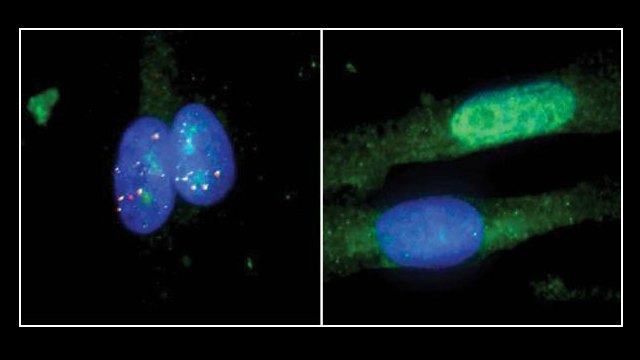Armed with a modified version of CRISPR-Cas9, scientists have removed nucleotide repeats from RNA in vitro that are known to cause diseases, namely, Huntington’s, ALS, and myotonic dystrophy. Cells from patients with myotonic dystrophy were restored to normal function after the CRISPR treatment, Gene Yeo of the University of California, San Diego, and colleagues report today (August 10) in Cell.
“It’s tempting to imagine how this exciting capability might be used to treat genetic diseases one day, although many additional studies are needed to test this possibility,” Harvard University professor David Liu, who was not part of the study, tells KPBS.
The study is an extension of previous work from Yeo’s lab developing the so-called RCas9 nuclease, which homes in on RNA rather than Cas9’s normal DNA target. The researchers used RCas9 to cut away microsatellite repeat extensions, strings of sequence copies responsible for disease.
See “RNA-Targeting CRISPR”
Lead author and postdoc Ranjan Batra points out the difference between targeting RNA and targeting DNA. “Any changes we make to DNA are permanent,” he tells KPBS. “Any changes that we make to RNA stay for only a few hours until a new RNA is made.”
Yeo tells the San Diego Union Tribune that a viral vector-administered RNA treatment could last 5-10 years. “The main thing we don’t know yet is whether or not the viral vectors that deliver RCas9 to cells would elicit an immune response,” he says in a statement. “Before this could be tested in humans, we would need to test it in animal models, determine potential toxicities and evaluate long-term exposure.”







